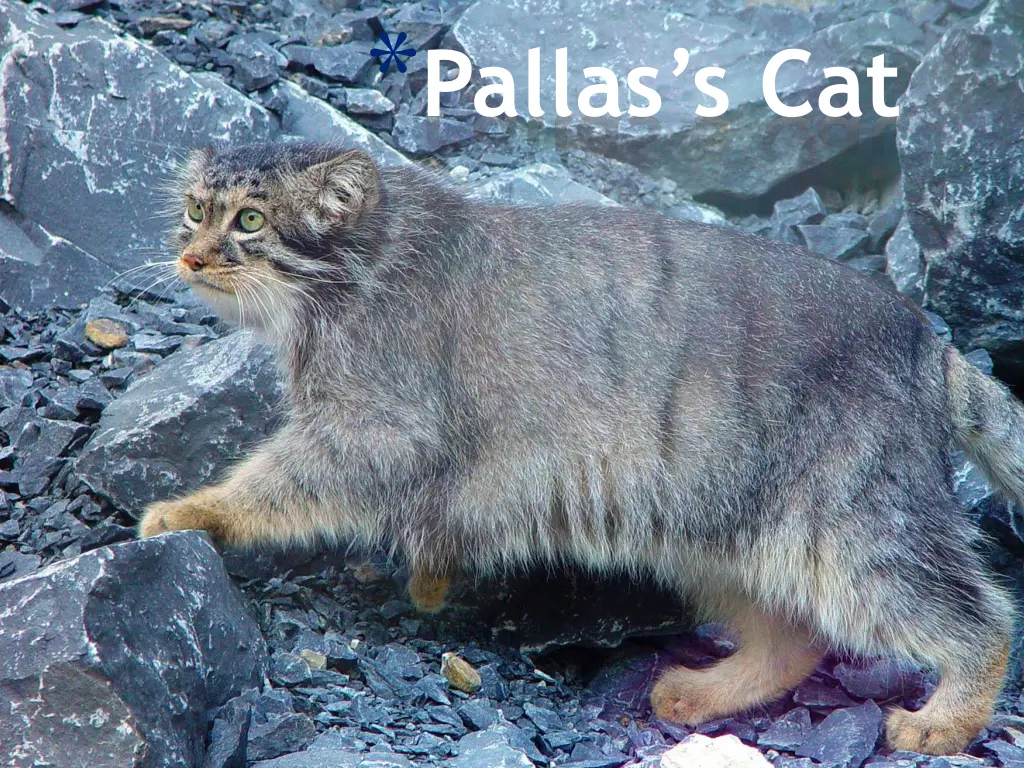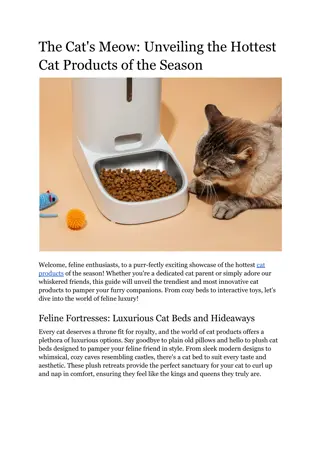
Fascinating Insights into Pallas Cats and Their Habitat
Delve into the world of Pallas Cats, also known as Manuls, as we explore their distribution, lifestyle, diet, and conservation status. Learn about the challenges they face and efforts to protect these unique felines in Central Asia.
Download Presentation

Please find below an Image/Link to download the presentation.
The content on the website is provided AS IS for your information and personal use only. It may not be sold, licensed, or shared on other websites without obtaining consent from the author. If you encounter any issues during the download, it is possible that the publisher has removed the file from their server.
You are allowed to download the files provided on this website for personal or commercial use, subject to the condition that they are used lawfully. All files are the property of their respective owners.
The content on the website is provided AS IS for your information and personal use only. It may not be sold, licensed, or shared on other websites without obtaining consent from the author.
E N D
Presentation Transcript
* Well-furred cats from the cold Asian steppes, Pallass Cats Otocolobus manul are also called Manul, Steppe Cat or Rock Wildcat.
*Distribution *Manul occur in Central Asia, from the Caspian Sea through Iran, Afghanistan, Pakistan and northern India to central China, Mongolia and southern Russia.
*Lifestyle *Pallas s cats are usually nocturnal but may come out during the day. They move around on their own in a territory that spans 2 to 3 miles. They den in caves, crevices and burrows made by other animals. The Pallas s cats long, dense fur provides insulation against their snowy environment.
*Food *Pallas s cat eats small mammals such as rodents and pikas, and ground-dwelling birds.
*Life Cycle *The Pallas s cat can usually lives to be 8 to 10 years old. Females give birth in late spring to litters of up to six young. In 4 to 6 months, the kittens are mature. Females are ready to be mothers at 1 year of age but little is known about the cats mating behavior.
*Some of Neighbors *Gazelles, marmots, gray wolves, saiga antelope, steppe eagles, maral deer, desert dormouse, marbled polecat, Marco Polo sheep, great bustard, squirrels
*Population Status & Threats *In the 1900s, fur traders hunted Pallas s cats for their fluffy coats. Eventually, laws were made to protect the cats. The hunt for their fur has slowed but still goes on, threatening the Pallas s cat s survival. Efforts to poison pikas to control their population also puts pressure on the cats.
*WCS Conservation Efforts *WCS(Wildlife Conservation Society) is working with government officials and scientists in Central Asia to eventually create an International Peace Park that would protect animals in the region.
*The best hope for Pallas Cat is that the inaccessibility and desolation of their habitat will help keep their numbers from being too decimated. Conservation measures must include improving law enforcement efforts and revamping the hunting permit system.






















